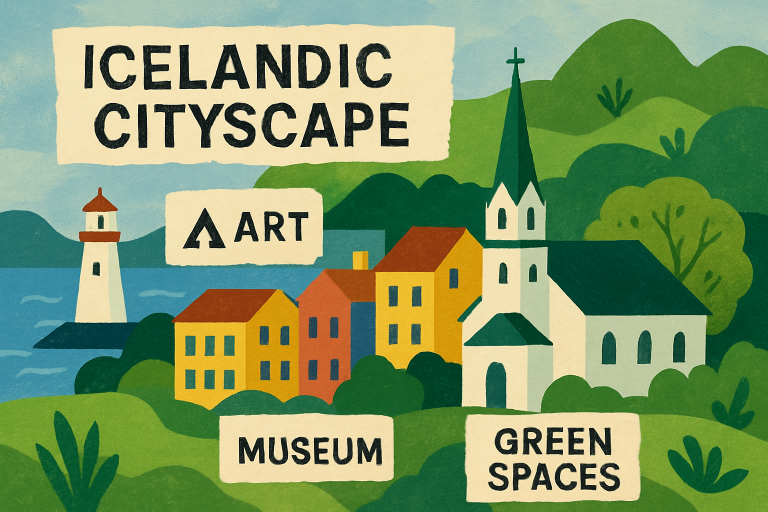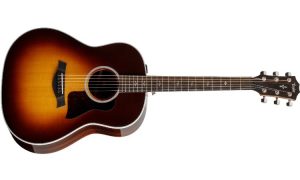Table of Contents
- Árbæjarsafn Open Air Museum
- Elliðaárdalur Valley
- Þúfa Art Installation
- Gerðarsafn Art Museum
- Gljúfrasteinn Museum
- Museum of Design and Applied Art
- Icelandic Punk Museum
- Grótta Lighthouse and Nature Reserve
Key Takeaways
- Discover unique attractions in Iceland’s cities beyond the typical tourist spots.
- Experience local culture and history through lesser-known sites.
- Enjoy a blend of nature and urban life in these hidden gems.
While Iceland’s iconic waterfalls and geographical marvels draw adventure seekers from across the globe, its cities possess a richer, quieter magic reserved for those who know where to look. Venture away from the typical Iceland itinerary and you’ll discover inviting corners where urban life dances with culture, creativity, and tranquil nature. If you’re ready to explore beyond the usual attractions, uncovering the best cities to visit in Iceland opens up a world of memorable local experiences that reveal the country’s creative spirit and deep-rooted traditions.
Wandering through the heart of Reykjavik or venturing to the smaller municipalities, you’ll find local museums, art installations, and serene valleys that narrate Iceland’s story in unexpected ways. These carefully curated city sites not only celebrate Icelandic history and innovation, but invite visitors to savor peaceful moments between thrilling excursions into the wilderness. Read on to uncover a guide to the must-see hidden gems that will enrich your journey through Iceland’s vibrant urban landscapes.
Árbæjarsafn Open Air Museum
Tucked on the outskirts of Reykjavik, the Árbæjarsafn Open-Air Museum immerses visitors in Iceland’s rural heritage. Stroll through a village of authentic turf houses, craft workshops, and period interiors, each lovingly preserved to illustrate how Icelanders lived, worked, and overcame the elements generations ago. According to U.S. News Travel, the museum offers a glimpse into daily life in Reykjavik from centuries past, complete with costumed interpreters and interactive exhibits. The setting among grassy fields and grazing sheep provides not only educational opportunities but also enchanting photo ops. Árbæjarsafn hosts themed events throughout the year, making it an ever-evolving destination for both families and history buffs.
Elliðaárdalur Valley
Just a short walk from Reykjavik’s city center lies the tranquil Elliðaárdalur Valley, a peaceful escape into Icelandic nature right on the city’s doorstep. As Travel + Leisure notes in their Reykjavik travel guide, this green oasis features forests, woodlands, rivers, waterfalls, wildflowers, and “dozens of perfect picnic spots,” showcasing the river’s charm and the valley’s appeal to both locals and visitors. Whether you’re walking, cycling, birdwatching, or chasing the sound of gentle cascades, this year-round haven invites you to rediscover serenity without straying far from the urban rhythm.
Þúfa Art Installation
Rising quietly along Reykjavik’s waterfront in the Grandi district, the Þúfa Art Installation by Ólöf Nordal blends nature with art in a uniquely Icelandic way. The large, grass-covered mound spirals upward, culminating in a tiny timber hut used to dry fish in a nod to traditional livelihoods. A climb to the top rewards you with panoramic views over Reykjavik’s harbor and Mount Esja, while the tranquil setting invites peaceful reflection—even as ships and seagulls come and go in the distance. The installation has become an iconic symbol of how daily life and culture merge in Iceland’s coastal communities.
Gerðarsafn Art Museum
Modern art enthusiasts will find inspiration at Gerðarsafn Art Museum in Kópavogur. Dedicated to pioneering sculptor Gerður Helgadóttir, the museum showcases contemporary sculpture, painting, and mixed-media works from Iceland and abroad. Rotating exhibitions offer new perspectives each visit, while the striking architecture—complete with a stunning glass facade—makes Gerðarsafn one of the most dynamic spaces for creative expression in the region. The tranquil grounds surrounding Kópavogskirkja Church, located nearby, are ideal for a meditative stroll after visiting the galleries.
Gljúfrasteinn Museum
Just outside Reykjavik, in the Mosfellsdalur Valley, lies the Gljúfrasteinn Museum, the meticulously preserved home of Nobel Prize-winning writer Halldór Laxness. Step inside to discover the personal library, artworks, and mementos that shaped the life and works of Iceland’s literary giant. The house offers a rare glimpse into mid-20th-century Icelandic culture, while the surrounding valley provides scenic walking trails and breathtaking mountain views. Exploring Gljúfrasteinn is a moving way to experience the creative heart and soulful beauty of Iceland’s cultural heritage.
Museum of Design and Applied Art
In Garðabær, just outside the capital, you’ll find the Museum of Design and Applied Art. This light-filled space showcases Icelandic design through the past century, with exhibitions on furniture, textiles, jewelry, and contemporary product design. Visitors can trace the evolution of Iceland’s minimalist aesthetic, shaped by nature and practicality, alongside decorative arts that capture the country’s creative pulse. It’s an essential stop for anyone passionate about Nordic design and craftsmanship.
Icelandic Punk Museum
Reykjavik’s vibrant music scene is on full display at the quirky Icelandic Punk Museum. Ingeniously situated in a former public restroom, this underground spot pays homage to the rise of Icelandic punk music in the 1980s and 1990s. Original records, graffiti, photographs, and interactive exhibits plunge visitors into the energy, rebellion, and creativity that defined the era. The museum offers an entertaining and hands-on look at a subculture that, while unconventional, has become a powerful force within the nation’s artistic landscape.
Grótta Lighthouse and Nature Reserve
Where Reykjavik meets the sea, Grótta Lighthouse and Nature Reserve crowns the Seltjarnarnes Peninsula, attracting photographers, birdwatchers, and winter aurora seekers. Accessible on foot at low tide, the lighthouse stands as a steadfast sentinel amid rocky beaches and tidal pools. In warmer months, nesting seabirds create a lively scene, while in winter, Grótta becomes one of the best nearby spots to watch the Northern Lights dance overhead. The blend of pristine nature, dramatic skies, and historic charm makes Grótta a favorite spot for both locals and visitors.
Each of these hidden gems reveals a side of Icelandic urban life characterized by creativity, tranquility, and lively history. Exploring these sites provides a deeper appreciation for the country’s cultural fabric and offers a memorable contrast to its famed natural wonders.



